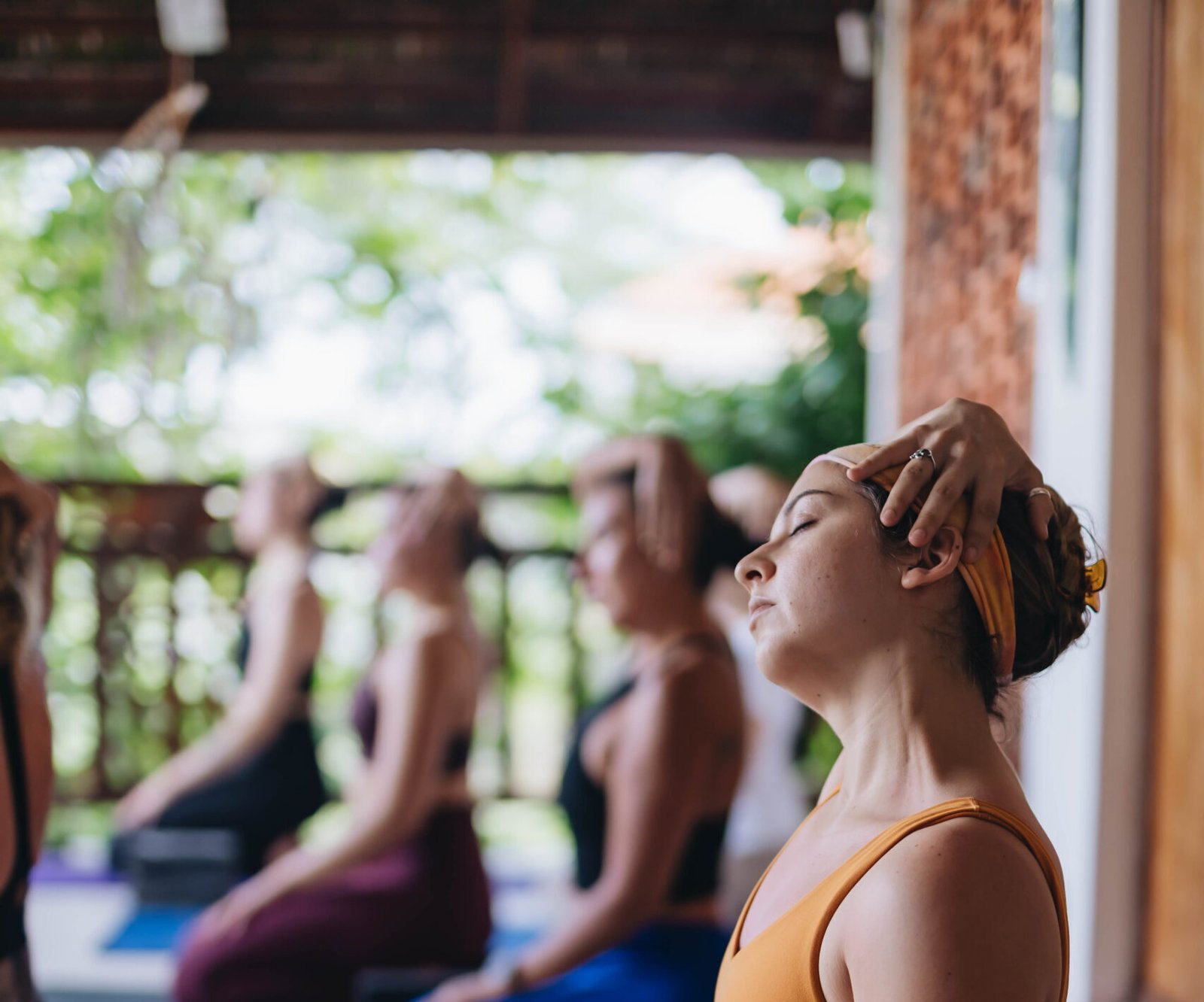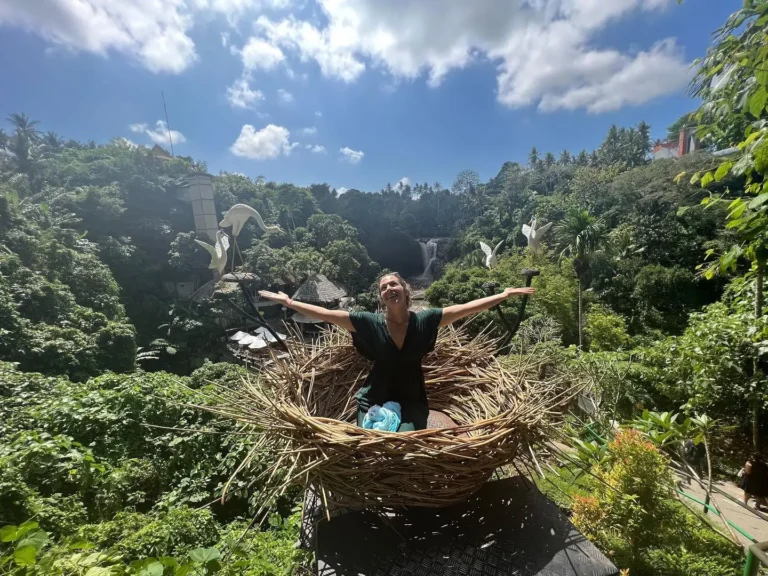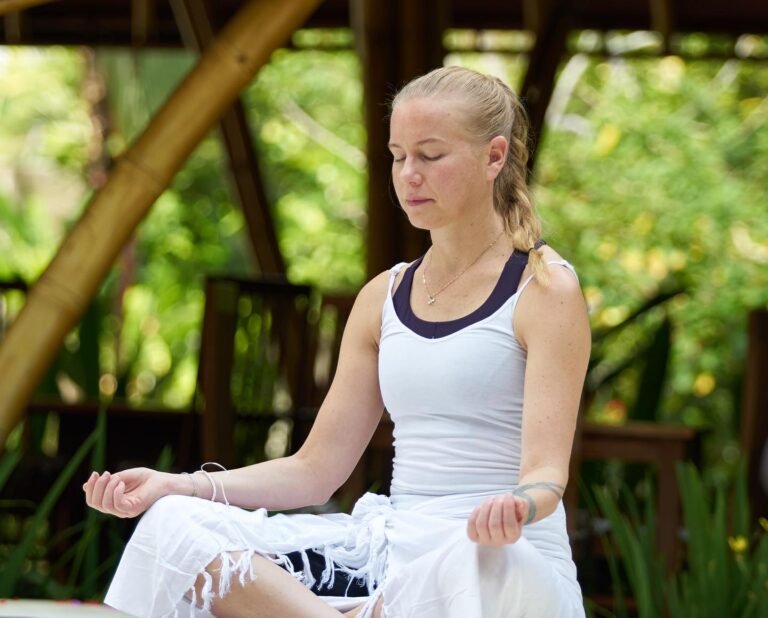Sleep Science Meets Yoga: Asanas and Breathwork for Deep Rest
Hello, everyone!
As dedicated practitioners of yoga, we often catch ourselves in awe of the deep connections between our ancient practice and modern science. Today, we’d like to dive into a subject that is important to us (and often our pillows!): Sleep Science Meets Yoga: Asanas and Breathwork for Deep Rest.
At Maa Shakti Yog Bali, we’re passionate about exploring how timeless yogic wisdom aligns with modern science to improve everyday wellbeing — and sleep is one of the most profound areas where this connection shines.
Let’s be real, who doesn’t like a night of truly restorative sleep? In our society, full of requests for our attention and precious time, the experience of good quality sleep often feels out of reach, and yet it is arguably one of the essential building blocks of health—and fortunately—happens while we “do nothing!” And guess what? Yoga has a great kit to offer to help you find that deep, relaxing rest!
A Brief Overview of the Sleep Cycle
Before we unroll our mats, let’s have a quick chat about what it means to sleep. We don’t have just one long state of awareness while asleep, but rather a dynamic cycle of distinct stages, mainly one of our states of sleep: REM (Rapid Eye Movement) sleep or non-REM. With respect to non-REM sleep, we have lighter (stage one or two) and then deep sleep (stage three). Deep sleep is the time when we restore our muscles, repair cells, and bolster our immune system. REM sleep is critical for cognitive functions, consolidating memories, and processing our emotions, just to name a few.
When we do not receive adequate time in these stages, deep sleep in particular, we wake up feeling sluggish and cloudy-headed and with a lack of synchrony in our bodies. This is where yoga is beneficial!
The Role Yoga Plays in Sleep Optimization
Yoga isn’t just about flexibility or strength; it’s an integrated approach to helping both our physical and mental health, with a strong effect on our nervous system. Many of us live in a state of “fight or flight,” which is, at times, helpful for emergencies but not an effective way to wind down, as it relies primarily on our sympathetic nervous system. Yoga assists with the activation of our parasympathetic nervous system, commonly called the “rest and digest system.” This shift then instructs our body that it is safe to rest, repair, and eventually, sleep deeply.
Is it a simple process? The answer is yes! Movement, through particular yoga positions that will improve sleep, and breath work, a more powerful option for sleep.
Gentle Poses to Help Settle into a Peaceful Evening Routine
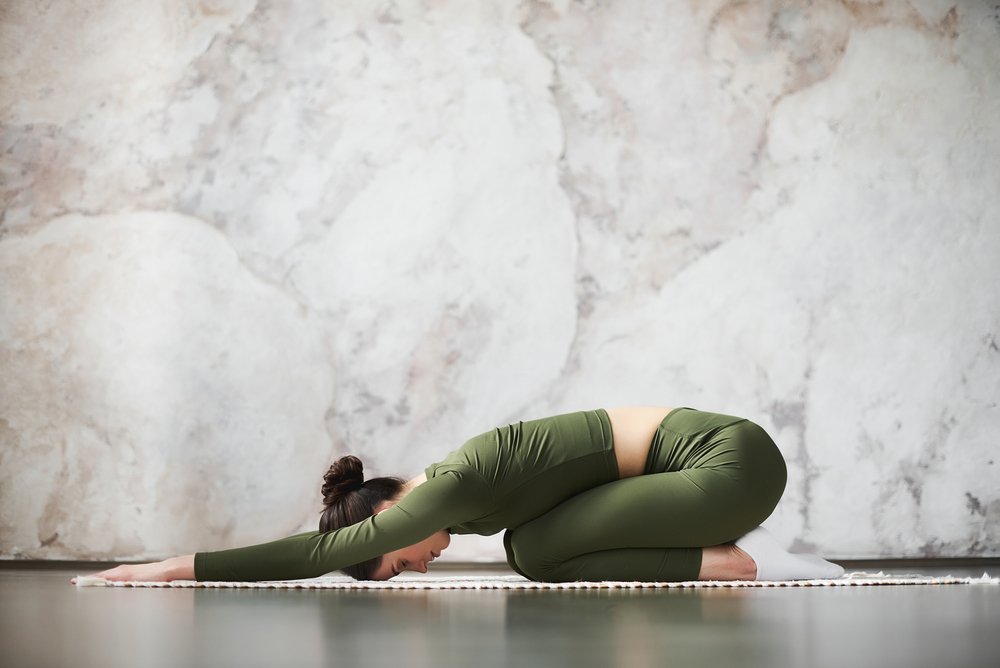
As part of your evening routine, practicing even just a couple of gentle yoga poses will work wonders. It is important to note here that these poses should be calming and grounding in nature and not launch into poses that are too laborious or stimulating. They should be long-held, gentler stretches and invite tension to be let go, or be gently designed for sleep practices. These are perfect poses for before-bed yoga.
Here are a selection of our go-to restorative poses in yoga for sleep:
Child’s Pose (Balasana):
How to: Kneel on your mat with your big toes touching, and spread your knees wide (or keep them together for a bit more of an inward focus.) Fold forward and place your torso between or down on your thighs. Relax your arms forward or bring them back alongside your torso.
Why it works: This is a beautiful posture to ground you down and gently stretch your lower back and hips. It brings about a sense of safety and calm while you draw attention inward.
Legs-Up-The-Wall (Viparita Karani):
How to: Sit on one hip close to a wall. As you lie back, swing your legs up the wall. Put a cushion underneath your hips if you would like a little more comfort.
Why it works: This posture is incredibly restful. It gently reverses blood flow and reduces swelling in your legs and feet while helping the mind become quieter. This is a great acronym for those with insomnia.
Supine Spinal Twist (Supta Matsyendrasana):
How to: Lie on your back and hug your knees in your chest, then drop both knees to one side. Extend one arm out to the side, looking over that shoulder if you feel okay with it. Do the same on the other side.
Why it helps: Twists are wonderfully detoxifying, helping to relieve tension in the spine, shoulders, and hips. They can be really soothing for the nervous system.
Reclined Bound Angle pose (Supta Baddha Konasana):
How to: Lie on your back and bring the soles of your feet together. Let your knees fall out to the side. You can also put cushions underneath your knees for support.
Why it helps: A gentle hip opener, this pose is deeply relaxing and helps to relieve tension that you may hold in your hips and groin and helps to foster a sense of surrender and calmness.
Corpse pose (Savasana):
How to: Lie flat on your back with your legs extended and slightly apart, arms along your body, palms up. Allow yourself to go completely soft and give in to the pull of gravity!
Why it helps: The ultimate relaxing pose! Savasana allows you to benefit from your practice and completely shift into a state of rest and relaxation. It is an important aspect of true relaxation before sleeping.
Breathwork for Deep Relaxation and Sleep Onset
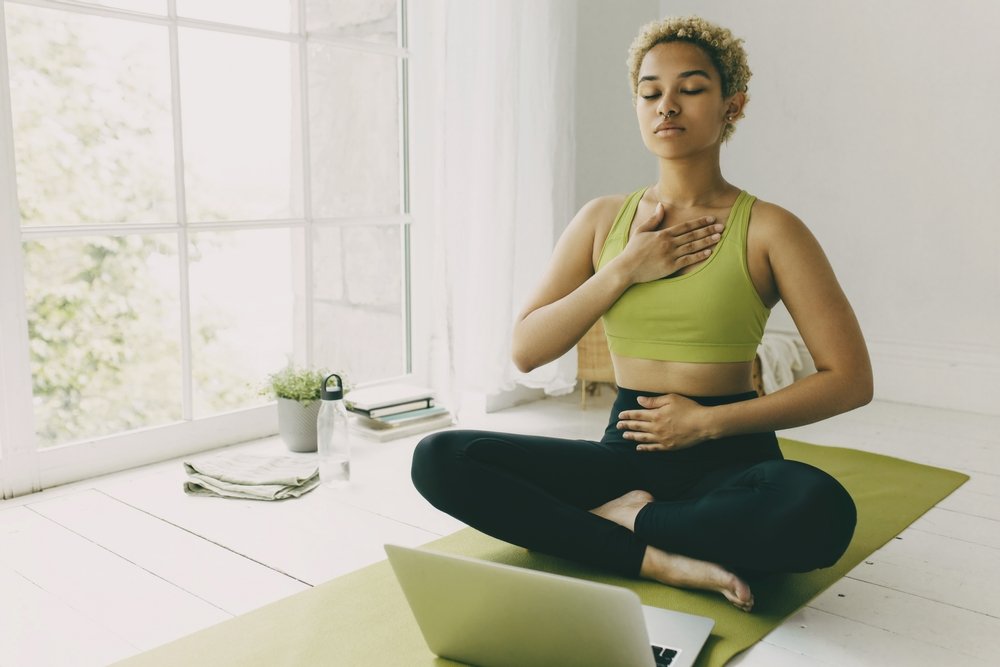
The breathwork, or pranayama, is an immensely powerful influence of yoga on our nervous system. Slow, deep, and mindful breathing specifically stimulates the vagus nerve, which can put us into that rest and digest mode, which is more likely to get us to sleep and have a deep and restful sleep.
Some of the effective sleep breathwork techniques are as follows:
Diaphragmatic Breathing (Belly Breathing):
How to: To do it, lie on your back with one hand touching your belly and the other touching your chest. Breathe in and out with a deep breath in your nose, and you will feel your belly swell. Breathe out gradually either through your mouth or nose, and your belly will sink. Keep your chest not so much in motion.
Why it is beneficial: It is the most natural and relaxative breathing. It slows the heart rate and directly stimulates the parasympathetic nervous system. It forms the basis of a stress reliever to sleep.
4-7-8 Breath (Relaxing Breath):
How to: Breathe in by counting your breaths to 4 through your nose. Count to 7 before breathing out. Breathe out fully using your mouth, and with a sound of “whoosh,” count up to 8. Repeat for 3-4 cycles.
Why it works: This method was developed by Dr. Andrew Weil and is an effective natural tranquilizer for the nervous system, allowing the mind to relax enough to sleep and even helping with sleep disorders.
Alternate Nostril (alternate) Breathing (Nadi Shodhana) (some time earlier in the evening):
How to: Sit comfortably. Seal off the right nostril with the right thumb and breathe in through the left nostril. Seal your left nostril with a ring finger, unleash your thumb, and breathe out via your right nostril. Breathe in with your right nostril, then close it with your thumb, then release your ring finger and breathe out with your left. Continue alternating.
Why: It is most effectively practiced earlier in the evening, before bedtime (as it can be somewhat stimulating to some). Nadi Shodhana balances the mind between the left and right hemispheres to achieve mental clarity and a feeling of relaxation that can prepare the mind to sleep later. It is great as a sleep meditation.
When you make your sacred sleep sanctuary.
Other than the poses and breathwork, look at your total environment. Have a light supper, put the screen away an hour or two before going to bed, and, perhaps, have a warm cup of herbal tea. Imagine your bedroom as a place of sleep. Consistency is key! Even ten or fifteen minutes of such a tender exercise at night can greatly enhance your sleeping pattern.
By applying the ancient knowledge of yoga to what we are familiar with regarding the modern understanding of sleep, you can change the way you spend your nights and therefore your days. These practices are worth trying, and you should pay attention to your body and see some beautiful changes in your sleeping patterns.
For those who wish to dive deeper into the connection between yoga, the mind, and the body, a 200-hour Yoga Teacher Training course in Bali can be a life-changing experience. It offers a chance to study how asanas, pranayama, and yogic philosophy influence not just sleep, but overall wellbeing and awareness.
Oh, sweet dreams and happy stretching!

